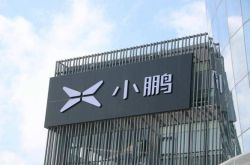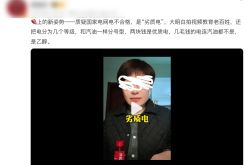Porsche's Dramatic Decline!
![]() 11/11 2025
11/11 2025
![]() 527
527
Approaching the Abyss
Porsche, once revered as the "most profitable brand" in the Chinese market, has suffered a far more severe downturn than anticipated, with a 99% plunge in profits, a halved market value, dwindling sales, and a tarnished brand image.
Recently, Porsche's financial report unveiled that its sales revenue for the first three quarters stood at approximately €26.86 billion, marking a 6% year-on-year decrease. Meanwhile, its operating profit dwindled to a mere €40 million, a staggering 99% drop from the previous year.
Porsche attributed this abnormal plunge in operating profit to five key factors: expenses related to product strategy adjustments, challenges within the Chinese market, one-time expenditures on battery initiatives, organizational transformation costs, and the impact of escalated U.S. import tariffs.
Among these, the transformation in the Chinese market has been particularly striking. Just three years ago, Porsche was flourishing in China, maintaining its status as "Porsche's largest single global market" for eight consecutive years and contributing to 30% of its global sales. However, the tide turned sharply in 2023. In the first three quarters of 2025, Porsche's global sales declined by 6% year-on-year to 212,500 units. In the Chinese market, sales for the same period plummeted to only 32,200 units, a 26% year-on-year decrease, and nearly two-thirds lower than the peak of 95,000 units recorded in 2021.
Following the "technological empowerment" strategies employed by Chinese new energy brands, which have shattered the brand premium that Porsche and others once relied on, consumers are now reluctant to pay for the once-coveted "luxury halo." Amidst the rapid proliferation of new energy and intelligent technologies, Porsche, which has been sluggish in its transformation, is gradually losing its edge.
Porsche's Chief Financial Officer, Jochen Brekerna, stated, "We anticipate 2025 to be Porsche's nadir, with significant improvements expected from 2026 onwards."
The Foundation Crumbles
In 2022, Porsche was still regarded as the cash cow of the Volkswagen Group, with a market value soaring to €83 billion, ranking it among Europe's most valuable automakers. Even during the global automotive market downturn amid the pandemic, Porsche maintained counter-trend growth, achieving numerous milestones.
However, a year later, the "myth" began to unravel. Porsche, which boasted an 18% return on sales in 2023, saw its return on sales drop to 14.1% in 2024. In the first half of this year, Porsche's return on sales plummeted from 15.7% year-on-year to 5.5%. The situation further deteriorated in the third quarter, with a staggering €966 million quarterly operating loss, leading to a significant shrinkage in Porsche's operating profit for the first three quarters to €40 million.
The Chinese market, which had been Porsche's "profit pillar" and its largest single global market for eight consecutive years, also began to decline from 2023.
In 2023, Porsche's deliveries in the Chinese market were 79,300 units, a 15% year-on-year decrease, making it the only market where Porsche experienced a decline globally and losing its status as Porsche's largest single market. In 2024, Porsche's global sales were 310,700 units, a 3% year-on-year decrease, with Chinese market sales at 56,900 units, a significant 28% year-on-year decline, reducing its market share to 18.31% and dropping it from the top global market to third place.
In 2025, the decline persisted. Porsche's CFO, Brekerna, even publicly admitted that the downward trend in the Chinese market "may persist until 2026."
More challenging to contain is the fact that the sales decline has triggered a shakeup in the pricing system. Porsche, which once required customers to queue up and pay a premium for vehicle pickups, has now witnessed "fire sales" in the terminal market. From the Macan to the Taycan, and then to the Cayenne and Panamera, all have been caught up in the "price cut wave," with discounts as high as 40%, further eroding Porsche's "luxury" label.
The direct consequence of plummeting sales and discounts has been a sharp drop in dealer profits, which has also triggered a high-profile channel management chaos at Porsche. Several Porsche dealers claimed that Porsche, in order to meet sales targets, pressured dealers with unreasonable conditions, ultimately forcing dealers to collectively "revolt."
Although Porsche eventually promised to "work together in mutual trust to overcome difficulties" to quell the storm and urgently replaced its leadership, Porsche's foundation still cannot escape the trend of "collapse."
A Turnaround on the Horizon?
Porsche's confidence in "significant improvement by 2026" may be linked to the establishment of its R&D center in China.
Late last year, Porsche announced that it would establish its first R&D center outside Germany in China. In Porsche's view, establishing an R&D center in China is crucial for accelerating its electrification and intelligent transformation. A year later, this plan has rapidly materialized.
On November 5th, the R&D center officially opened its doors. It is the first full-link R&D hub outside of Porsche's Weissach R&D center, led by a Chinese local team, which has already assembled a 300-member engineer team.
As part of its "In China, For China" strategy, Porsche hopes to directly customize its vehicles locally based on customer needs in the future. In addition to having greater autonomy and agility in operations, the center should also significantly shorten development times and adapt to the "Chinese speed."
According to Porsche China President and CEO Michael Spitzer, one of the important outcomes of this R&D center, led by a Chinese local team, is the planned launch of a native infotainment system for the Chinese market in mid-2026.
Spitzer has publicly stated that 2025 will be a year for the company to recalibrate, and in 2026, Porsche will restart its "offensive mode" to win back the Chinese market. Based on the current situation, the R&D center will play a pivotal role in this endeavor.
However, the reality is that the voice in the luxury car market has now been reshaped by Chinese brands through technology. Despite several luxury brands stepping up their efforts to regain market share, none have succeeded, and the required investment in capital and effort continues to grow. Therefore, even BBA brands have begun to actively partner with Chinese local intelligent driving companies to reduce their own R&D investments and shorten the intelligence gap with Chinese brands.
Mercedes-Benz, while persisting in self-research, has invested in the Chinese intelligent driving company Momenta; BMW, while conducting self-research, has partnered with Momenta to focus on intelligent driving assistance and has increased cooperation with Chinese tech companies such as Banma Zhixing and Huawei; Audi has become the first luxury brand to feature Huawei's intelligent driving technology, with collaboration models covering several mainstream models from FAW-Volkswagen Audi and SAIC-Volkswagen Audi, while its new brand AUDI has chosen Momenta, strategically invested in by SAIC Motor.
The rapidly evolving competitive landscape has not only forced traditional luxury brands to re-examine their strategies but also compelled them to humble themselves and "embrace China." BBA has already shifted gears, while Porsche's self-research journey has just begun.
This article is an original piece by China Auto News. We welcome sharing by our readers. Media outlets wishing to reprint must credit the author and source at the beginning of the article. Any media or self-media outlet found creating video or audio scripts based on the content of this article will be held legally responsible.





